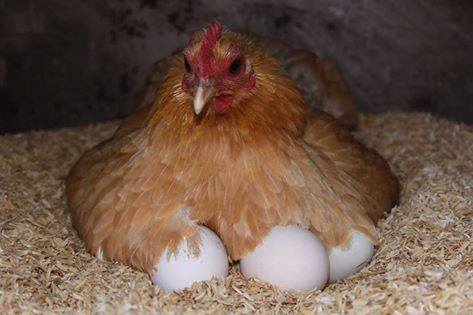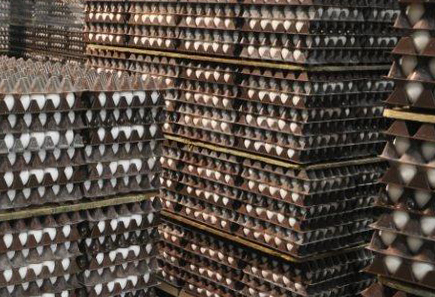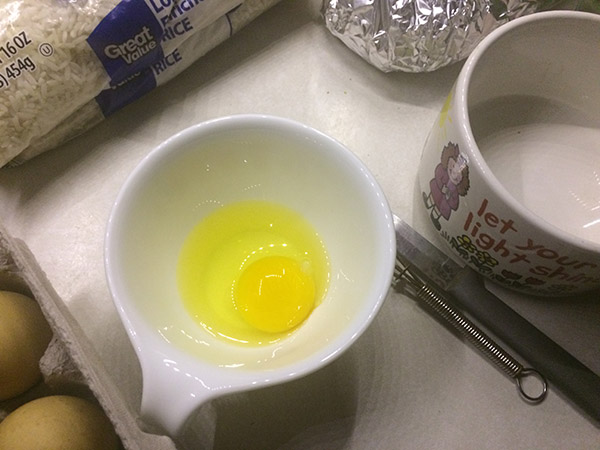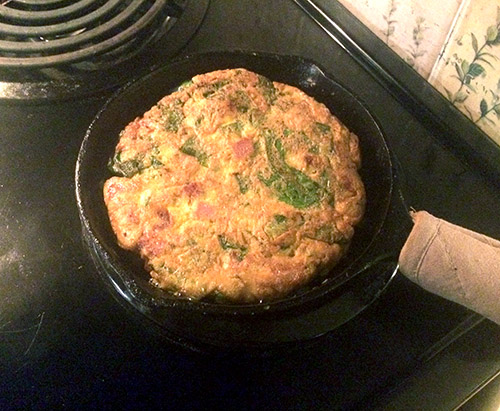We recently got a reminder of how long home-flock eggs can stay viable as food without refrigeration. Good for a prepper to know, eh? The answer is weeks, maybe months. We found a “secret” nest containing 17 eggs that proved the longevity of fresh eggs.
Hidden Nest Backstory

One of our new hens was being harassed and hazed by the older hens. Think freshmen in high school. She was apparently being bullied over who has a right to be in the nest boxes. (She did not, apparently) Her solution was to lay her eggs someplace else. That someplace else turned out to be in an overgrown area of our garden that had been a dill patch. With all the old dill stalks and such, we had no idea she was laying in there. We only discovered the nest when chasing that hen and the rooster out of the garden.
After the discovery, the question was: what to do with those seventeen eggs? With her laying, roughly, an egg a day meant those eggs had been outside on the ground for three weeks — maybe longer. Were they any good? The dear wife was inclined to wrinkle her nose and not take the chance. I was more inquisitive and put more faith in the chicken’s natural “bloom” to keep the eggs edible. I wanted to eat them. Don’t waste a resource.
Bloom: Secret of Freshness
My confidence centered around Bloom. An egg gets a coating of a watery substance during the final laying process. If you’ve ever picked up an egg immediately after being laid, you might have noticed that it was wet. That wet coating is called the “bloom.” It dries very quickly and seals the egg. This is a designed-in survival feature for chickens (more on that below). That Bloom coating prevents bacteria from getting into the egg to begin the rot process.
A freshly laid egg, if unwashed, can sit out on your counter (or even in a dill patch!) for weeks and still be good to eat. Some sources say that they’re good for a month or two. Refrigeration is not required. This goes against our culture’s germaphobe teaching but it’s true.
Bloom: Reproductive Feature

It can take a week or more for a hen to lay enough eggs to have a clutch to sit on and hatch. By the time her last egg is laid, the first ones will have been laying around in ambient temperatures for a week. Gasp, right? Not to worry. The bloom coating protects the yoke and white inside the shell. Bacteria cannot get in. This is important for chicken reproduction. The first egg laid is just as safe and ready as the last one laid.
Bloom For Food
The same coating that keeps an egg viable to become a chick keeps an egg edible too. At the homestead, we routinely keep freshly laid eggs on the counter for a week or more just in how we handle them. No problem. So, I decided to put Bloom to the test and eat those seventeen eggs. (not all at once, of course)
Supermarket Eggs?

All this protective bloom talk does not apply to eggs you buy in a supermarket. Since the modern consumer tends to be fussy about “blemishes,” egg producers wash their eggs. This makes them more pristine-looking in the carton but the cleaning also washes off the bloom. The then-vulnerable eggs must be refrigerated. On top of that, supermarket eggs take a long time getting to you. They are usually sitting in warehouse refrigerators waiting to be ordered, or riding around in refrigerated trucks, or in the store coolers for a month or more, all totaled. Given production pipelines, they’re just not that fresh by the time you put them in your cart.
You cannot leave store-bought eggs on the counter for days or weeks. They’re totally unprotected.
Freshness Indicators
Once a bloom-less egg has become exposed to air (the shell is actually permeable), the yoke begins to shrink and lose color and the white loses its milkiness. This air-exposure goes on inside refrigerators too, by the way. That is one reason why farm-fresh eggs have bigger, oranger yokes and milky whites.
Proof In The Pan

Each morning after the secret nest discovery, I have had two of the eggs in a breakfast scramble. We crack them into a separate little bowl first, just to inspect them. It’s not easy to tell from the photo, but today’s eggs look like supermarket eggs — a paler yoke and clear whites. Even on unwashed eggs, bloom does eventually wear away allowing air in. They were still good enough to be food. The dear wife likes to enhance breakfast scrambles with little bits of ham and spinach. 🙂

Interesting that eggs we found on the ground outside after three weeks were about the same inside as what people buy in the supermarket. That kind of re-frames “fresh from the store.”
Bottom Line?
If you’re getting fresh eggs from someone with chickens, resist the urge to scrub them clean. A spot or a smudge are no big deal. You don’t eat the shells anyhow. Keep the bloom intact. Your eggs will stay fresher, longer.
(Legalese caveat about me not being a doctor or a nutritionist. You are responsible for what you put in your mouth, not me)

Chuckle I see you put your cracked eggs into a separate bowl just like my Grandmother taught me. That way when (not IF) you find a bad one the whole dish is not ruined. Bloom can be enhanced with food grade mineral oil or as my Grandmother would do rendered fat. Eggs thus treated were good for a couple of months depending on temperature and humidity.
Do you know how to Candle Eggs to make sure you have an chicken embryo in there with fertile eggs? If you hold the egg holding it like an OK symbol you can use a bright light (I use the sun) to see through the egg. Be careful looking at the sun friends OK?
The Egg Float Test gives you a pretty good report before you crack them how fresh they are. Like you said the shell even with bloom is not totally waterproof so moisture is lost and more air gets in.
Always crack them in a bowl.
HI Michael,
Yes, we crack our eggs in a bowl first. It doesn’t take much more than one bad egg in your french toast batter to learn the lesson.
We’ve not had to resort to the oil coating (yet?). They get eaten or bartered before that. We dehydrated some ‘extra’ back in the summer and still have those as reserves. We tried pickling some too. Might try some in apple cider vinegar to see how that goes. I wonder if a coating of “chicken oil” would work. Whenver I ‘process’ a bird for Freezer Camp, I usually end up with a good deal of fat that I render down into oil. There’d be something tidy about using a renewable resource.
We do candle our eggs when incubating (indoors or under a hen). I use a CREE flashlight and do so at night. Barred Rocks have brown shells that don’t pass a lot of light. Need the total darkness to see any embryo shadows.
Thanks!
Chicken oil once rendered AKA Smoltz is excellent for a lot of cooking needs. I’ve made flatbreads and biscuits with it.
What do you use that Chicken oil for Mic?
I would avoid using heavily seasoned Chicken Oil. Salt and pepper seems ok in my experience but once I tried to make Smoltz using chicken fat I cooked with Herbs de Province NOT Successful… Wonder what Habanero Chicken would render into…
I know Grandmother used rendered bacon grease to seal eggs before so I suspect Chicken Fats rendered would work also.
Fats seems to be a Preppers most difficult food stuff to store. Thus Chickens and Pigs were so treasured.
Hi Michael,
Smoltz? I tried googling that. It came back as “Schmaltz.” Is smoltz a local or family variant spelling?
Chasing down Schmaltz did reveal a lot of cooking uses (basically as cooking oil), esp. central European. That also explains the New York Yiddish use of “schmaltzy” (over-emotional, sentimental, highly romantic, etc.).
Thus far, I’ve used chicken oil to make soap. It’s prone to being on the softer side but usable. I’ll have to save some of the oil next time for cooking something central European.
You’re right that fats and oils are an elusive prepper/survivalist item. Oils don’t have the long shelf life of, say, grains. We need a renewable source like animals.
Mic it’s a Grandmother spelling. She knew of the hardships of Weimar Germany before fleeing to America and was fun to talk with once you got a beer or two into her.
Soft fats do make soft soaps but still useful. A Grandmother thing if you take an otherwise useless odd wool sock, felt it with hot water and place a bar of soap into it that bar of soap will last a long time. Thus even Chicken fat soap will work well. Also you can simply add a new bar to the otherwise useless slivers of the old bar.
From what I can tell from trying this myself it doubles the time between replacing an Ivory bar at my house. Seems the “Soap Melt” you and I clean off the soap dish is saved in the Felted wool for next times use.
The Winner in a Great Depression is those that lose the least, can shelter themselves, feed themselves and still laugh. Another Grandmother thing.